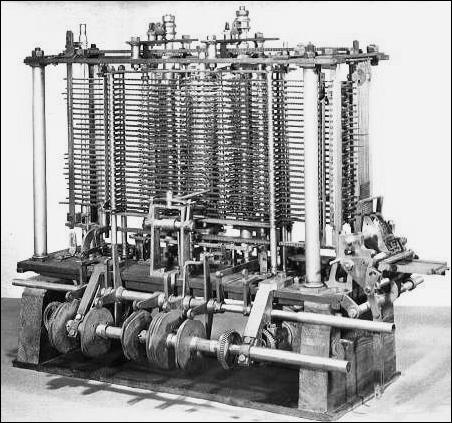5th June 1833
This day in history...Ada Lovelace (first computer programmer) meets Charles Babbage
Lovelace and Babbage are well known and well respected names in the computer science field. Babbage is best remembered for originating the concept of a programmable computer, something that most people now use every single day. Whilst Lovelace was an English mathematician, she is chiefly known for her work on Babbage's early mechanical general-purpose computer, the Analytical Engine. Today's event marks the start of a successful and professional relationship that led to great discoveries.
 |
| Image retrieved from Google. Will remove at owner's request. Lovelace and Babbage |
Babbage achieved many things in his life in many various fields. He was a British mathematician, philosopher, inventor and mechanical engineer. Babbage was born in London on 26th December 1791, as a son of a banker. He was often unwell as a child and was mainly home-schooled. He became interested in mathematics and by the time he attended Cambridge University in 1810, he was well educated in many subjects. After his graduation, Babbage was hired by the Royal Institution to lecture on calculus. He was soon elected as a member of the Royal Society and set up the Astronomical Society in 1820. From 1828-1839, Babbage was Lucasian Professor of Mathematics at Cambridge.
 |
| Image retrieved from Google. Will remove at owner's request. Charles Babbage |
 |
| Image retrieved from Google. Will remove at owner's request. The Analytical Machine |
 |
| Image retrieved from Google. Will remove at owner's request. Babbage's Public Nuisance publication: Table of the Relative Frequency of the Causes of Breakage of Plate Glass Windows |
 |
| Image retrieved from Google. Will remove at owner's request. The Babbage children: Benjamin, Georgiana, Dugald, Henry |
.jpg) |
| Image retrieved from Google. Will remove at owner's request. The machine at the London Science Museum |
Augusta Ada King, Countess of Lovelace was born on 10th December 1815, and was the child of poet George Gordon Byron - better known as the flamboyant and notorious Lord Byron, who was famous for his huge debts, numerous love affairs with both sexes, and scandals and exile. Back to Ada. Her mother promoted Ada's interest in mathematics and logic in an effort to prevent her from developing what she saw as the insanity of her father. Ada was often ill during her childhood and when she was 8 years old, she experienced headaches that obscured her vision. In 1829 she was paralysed after having the measles and was bed bound for nearly a year. By 1831 she was able to walk with crutches.
 |
| Image retrieved from Google .Will remove at owner's request. Ada Lovelace portrait 1840 |
| Image retrieved from Google. Will remove at owner's request. Ada Lovelace |
Despite her illnesses and disability, Ada developed her mathematical and technological skills. Lovelace developed strong relationships with her tutors and acquaintances. She was also once caught trying to elope with one of her tutors. Her close friends included Charles Dickens and Michael Faraday.
| Image retrieved from Google. Will remove at owner's request. Michael Faraday |
| Image retrieved from Google. Will remove at owner's request. Ada 1852 |
 |
| Image retrieved from Google. Will remove at owner's request.Lord Byron's gravestone |
Babbage's name has been dedicated to several locations, institutions and things:
- The Moon Crater Babbage
- The Charles Babbage Institute at the University of Minnesota
- British Rail named a locomotive after him in the 1990s
- The Babbage Building at the University of Plymouth
- The Babbage programming language fro GEC 4000 series minicomputers
- The former chain retail computer and video-games store 'Babbage's' (now GameStop)
 |
| Image retrieved from Google. Will remove at owner's request. Green Plaque in London |
The computer language, Ada, was created on behalf of the US Department of Defense and was named after Ada Lovelace. Since 1988, the British Computer Society has awarded a Medal in her name and in 2008 initiated an annual competition for women students of computer science. "Ada Lovelace Day" is an annual event held in October which aims to raise the profile of women in science, technology, engineering and maths. The Ada Initiative is a non-profit organization dedicated to increasing women's involvement in the free culture and open source movements.
 |
| Image retrieved from Google. Will remove at owner's request. Blue commemoration plaque |
 |
| Image retrieved from Google. Will remove owner's request. Ada Programming language |
I also came across a few cartoons and comic strips highlighting the successful relationship between Lovelace and Babbage:
 |
| Image retrieved from Google. Will remove at owner's request. Comic strip/cartoon |
This is incorrect. Micheal Faraday was not friends with Ada. Ada was a fan of Faraday and wanted him to tutor her but he declined.
ReplyDeleteIt's fascinating how Lovelace and Babbage collaborated on such groundbreaking work.
ReplyDelete